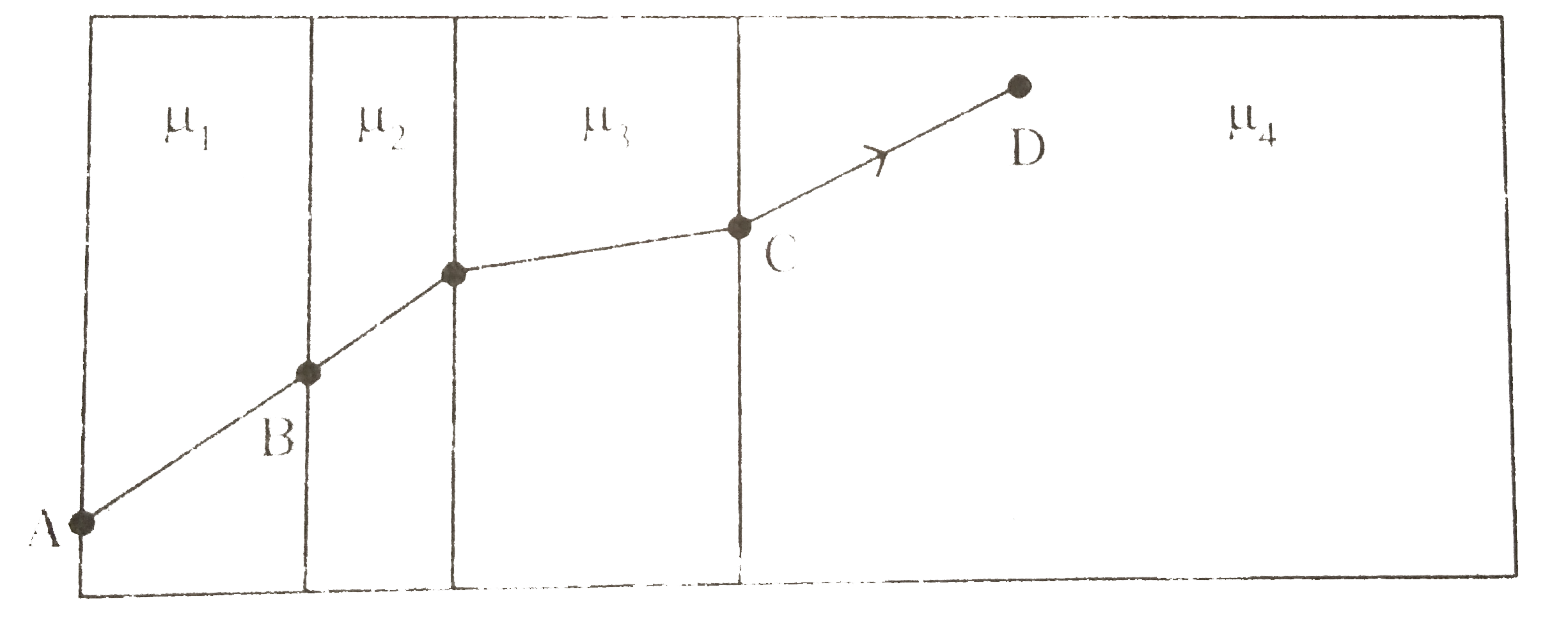Complete Solutions to 2. Reflection and Refraction of chapter ACIDS,BASES AND SALTS of Class 10 book with complete answers and questions
| Class 10 | CHEMISTRY |
| Chapter | ACIDS,BASES AND SALTS |
| VGS PUBLICATION-BRILLIANT | 2. Reflection and Refraction |
| Number Of Questions | 18 |
| Academic Year | 2023-24 |
A man runs towards a mirror with a speed of 15 `m-s^(-1)` . What is the speed of his image?
View SolutionThe light reflected by a plane mirror will form a real image
View SolutionIf a ray of light is incident on a plane mirror at an angle of `30^(@)` , then deviation produced by the plane mirror is
View SolutionAn object is placed at a distance f in the front of a convex mirror. If focal length of the mirror is f, then distance of image from pole of the mirror is
View SolutionA point source of light P is placed at a distance L in front of a mirror of width d hung vertically on a wall . A man walks infront of the mirror a long a line parallel to the mirror at a distance 2L as shown in the figure. The greatest distance over which he can see the image of the light source, in the mirror is
View SolutionIf a fish lies at the bottom of a 4 m deep water tank `(mu = 4//3)` and a bird is flying at a height of 6m above the water surface, then apparent distance at which the fish appears to the bird is
View SolutionA ray of light passes through four transparent media with refractive indices `mu_(1),mu_(2),mu_(3)andmu_(4)` as shown in the figure. The surface of are media are parallel. If the emergent ray CD is parallel to the incident ray AB , we must have

View SolutionA container is filled with water `(mu = 1 . 33)` upto a height of 33 . 25 cm and a concave mirror is placed 15 cm above the water level as shown in the figure. The image of an object placed at the bottom is formed 25 cm below the water level. The focal lenght of the concave mirror is approximately.

View SolutionA convex lens made up of a material of refractive index `mu_(1)` is immersed in medium of refractive index `mu_(2)` as shown in the figure. The relation between `mu_(1) and mu_(2)` is

View Solution`{:(" Column - I "," Column - II "),(" a) ""A lens that can form a real image"," P) ""Convex lens"),(" b) ""A lens that forms virtual and diminished image "," Q) ""Concave lens"),(" c) ""Incident ray is parallel to emergent ray"," R) ""Denser medium"),(" d) ""A substance in which speed of light is less"," S) ""Rectangular glass lab"):}`
View SolutionUnder which of the following statement describes the conditions a concave mirror can form an image larger then the actual object ?
View SolutionWhich of the following statements describes the condition-when is refraction of light NOT possible?
a) The angle of incidence is `0^(@)` . b) The two media have the same refractive index. c) The refractive index is higher then 3 . 0 .
View SolutionIn an ecperiment to determine the focal length of a convex, lens a student obtained a sharp inverted image of a distant tree on the screen behind the lens. She then removed the screen and looked throught the lens in the direction of the object she will see
View SolutionHow will the image formed by a convex lens be affected if the upper half of the lens is wrapped with a black paper ?

View SolutionThe relation between u , v and R for a spherical mirror is
View SolutionYou are given water, mustard oil, glycerine and kerosene. In which of these media a ray of light incident obliquely at same angle would bend the most ?
View Solution`{:(" Column - I "," Column - II "),(" a) ""Ray passing through centre of curvature"," P) ""Passes through focus after reflection"),(" b) ""Ray passing through principal focus reflection"," Q) ""Form a point-sized image at the focus after"),(" c) ""Rats from an object at infinite distance"," R) ""Becomes parallel to the principal axis after reflection"),(" d) ""Ray parallel to the principal axis"," S) ""Retraces its path after reflection"):}`
View SolutionA ray of light in incidentin medium 1 on a surface that separates medium 1 from medium 2 . Let `v_(1) and v_(2)` represent the velocity of light in medium 1 and medium 2 respectively . Also let `n_(12) and n_(21)` represent the refractive index of medium 1 with respect to medium 2 and refractive index of medium 2 with respect to medium 1, respectively. if 1 and r denote the angle of incidence and angle fo refraction, then -
View Solution
2. Reflection and Refraction questions and complete solutions for chapter ACIDS,BASES AND SALTS of VGS BRILLIANT CHEMISTRY (TELUGU ENGLISH) of Class 10